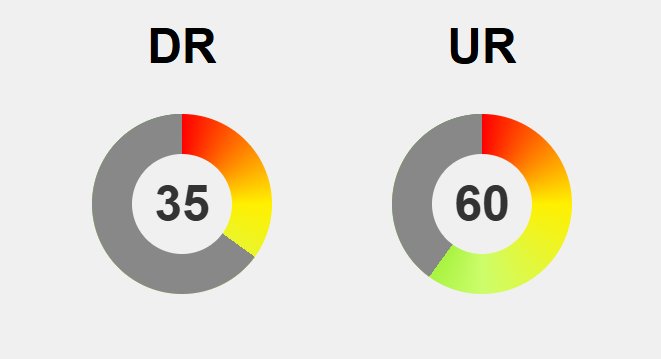What does the speed of your heart’s return to normal after exercise reveal about your hidden health risks? While a quick recovery often signifies a strong, resilient heart and efficient autonomic nervous system, a sluggish response can silently indicate underlying issues such as cardiovascular disease, high blood pressure, or chronic stress. This subtle sign, easily monitored via wearable devices, acts as an early warning system—yet many overlook its significance. Delayed heart rate recovery not only signals poor fitness but also correlates with increased inflammation and arterial stiffness, elevating long-term risks like heart attacks and strokes. By paying closer attention to how swiftly your heart reacts post-workout, you unlock vital insights into your overall health, enabling proactive lifestyle adjustments and early medical intervention. Could this simple measurement be your most accessible tool for uncovering concealed vulnerabilities and safeguarding your future well-being?
Unlocking Heart Health Through Speedy Heart Rate Recovery
When you finish a workout, your heart doesn’t just stop; instead, it gradually slows down. This process, known as heart rate recovery (HRR), measures how quickly your heart returns to its resting rate after exercise. Although it might seem simple, HRR offers surprisingly deep insights into your overall heart health and fitness level. A swift recovery usually indicates a strong cardiovascular system and efficient autonomic nervous system—the part that controls involuntary functions like heartbeat and breathing.
Understanding HRR goes beyond fitness tracking. It reflects how well your body manages stress and adapts to physical exertion. When recovery happens quickly, it suggests a healthy balance between the sympathetic nervous system, which energizes you during activity, and the parasympathetic nervous system, which calms your body down afterward. Conversely, a sluggish HRR can point to underlying issues such as reduced parasympathetic activity, chronic stress, or early signs of heart problems. How fast your heart recovers can reveal your body’s resilience and overall cardiovascular health.
Today’s wearable devices make tracking HRR easier than ever. A quick post-exercise check with a smartwatch or fitness tracker can give you immediate feedback on your recovery speed. Observing these patterns over time helps you understand whether your fitness is improving or if recovery times are getting longer—possibly signaling a need for lifestyle adjustments or medical attention. Regular monitoring turns HRR into a practical tool for staying connected to your body’s response during everyday activities.
HRR isn’t just about athletic performance; it’s a window into your long-term health. A slow recovery can serve as an early warning sign of hidden risks like high blood pressure, arterial stiffening, or even undiagnosed heart disease. Recognizing these signs early offers a chance to take action before symptoms appear. Small lifestyle changes such as increasing aerobic activity, managing stress, and improving sleep can help enhance your autonomic response and support healthier recovery times.
By paying attention to how quickly your heart rate drops after exercise, you gain a valuable perspective on your overall well-being. It’s a simple, non-invasive measure that can help you spot early warning signs and make informed choices for your long-term heart health. Regularly observing your HRR encourages a proactive approach—one that can empower you to maintain a resilient, healthy heart for years to come.
How Your Autonomic Nervous System Controls Heart Resilience
The autonomic nervous system (ANS) acts as the body’s control center for involuntary functions, including how fast your heart beats during and after exercise. It has two main branches: the sympathetic nervous system, which energizes your body by increasing heart rate during activity, and the parasympathetic nervous system, which calms things down by slowing your heart once you stop moving. This push-and-pull between the two ensures your heart responds appropriately to different demands.
During physical activity, the sympathetic system releases hormones like adrenaline that ramp up your heart rate, delivering oxygen and nutrients to your muscles. This response prepares your body for exertion, making sure your heart beats faster to meet increased demands. Once you stop exercising, the parasympathetic system takes over, acting as a brake that brings your heart rate back down to resting levels. The efficiency of this switch between activation and relaxation determines how quickly your heart recovers.
The speed at which your heart rate drops depends on how well these two branches work together. When functioning smoothly, your heart rate rises quickly during exercise and then declines steadily during recovery. This responsiveness indicates a healthy, adaptable nervous system. If this process is delayed or impaired, it suggests that your autonomic nervous system isn’t responding as efficiently, which can be a sign of underlying health issues.
Factors like fitness level, age, stress, and sleep quality influence recovery speed. More conditioned hearts and nervous systems respond faster, while aging and chronic stress tend to slow recovery. Conditions such as high blood pressure, diabetes, or early heart disease can impair autonomic function, leading to sluggish heart rate declines after activity. This impaired response isn’t just a minor inconvenience—it’s linked to increased cardiovascular risks over time.
Understanding the physiological role of the autonomic nervous system in heart rate recovery highlights why this process is so telling. It’s not only about how hard you exercise but also how effectively your body can restore balance afterward. A swift recovery signals a resilient, well-functioning system, while delays can reveal vulnerabilities that merit attention. Recognizing these signs can be a powerful step toward maintaining long-term heart health.
What a Slow Heart Rate Recovery Reveals About Hidden Risks
A slow heart rate recovery after exercise can be more than a sign of poor fitness; it often signals underlying health issues that develop quietly over time. When your heart takes longer than usual to return to its resting pace, it indicates that your autonomic nervous system isn’t functioning optimally. Since this system controls involuntary processes like heart rate and blood pressure, its imbalance can silently elevate your risk of future health problems.
This delayed recovery acts as an early warning sign for conditions such as high blood pressure, arterial stiffening, or even undiagnosed heart disease. These issues tend to evolve gradually, often without clear symptoms until they become severe. Recognizing sluggish HRR can alert you to underlying vulnerabilities before they manifest as noticeable health concerns, giving you a crucial window for intervention.
Research links delayed HRR with impaired autonomic regulation, which correlates with higher levels of inflammation and arterial stiffness. These factors contribute to the development of atherosclerosis and increase the likelihood of cardiovascular events down the line. In fact, a sluggish recovery can predict future heart attacks and strokes, even among individuals who seem healthy on the surface. It’s a subtle but powerful indicator of deeper health risks.
Beyond the heart, a slow recovery often reflects broader issues like chronic stress, poor sleep, or unhealthy habits. These factors can disrupt the balance of your autonomic nervous system, reducing your body’s resilience to daily stresses. If your recovery times are consistently longer, it’s worth examining your lifestyle and health habits. Small changes—such as managing stress better, improving sleep quality, or increasing moderate aerobic activity—can help restore autonomic balance and enhance recovery efficiency.
Ultimately, a sluggish HRR isn’t just about fitness; it’s a window into your body’s hidden vulnerabilities. Paying attention to this signal can help you catch early signs of health risks that might otherwise go unnoticed. Acting on these insights empowers you to make proactive adjustments—potentially preventing serious issues down the line and supporting a healthier, more resilient heart. Recognizing what a slow recovery reveals can be a vital step toward safeguarding your long-term well-being.
To learn more about how your heart health can be monitored and improved, consider exploring ways to enhance your cardiovascular health. Regular check-ups and lifestyle adjustments are essential steps in this process. For comprehensive guidance, you might find this resource on heart health and recovery helpful.
Simple Steps to Monitor and Improve Your Heart’s Recovery
Monitoring your heart recovery after exercise doesn’t have to be complicated. Today’s smartwatches and fitness trackers come equipped with heart rate monitors that provide real-time data on how quickly your heart drops back to resting levels once you stop moving. Using these devices, you can easily track whether your recovery is swift or sluggish without needing invasive tests or specialized equipment. Simply note your heart rate immediately after finishing your workout and again during the first minute of rest. Over time, these numbers can reveal patterns—showing whether your fitness is improving or if recovery times are lengthening, which might signal a need for lifestyle adjustments.
Incorporating recovery checks into your routine is straightforward. After each workout, find a quiet moment, sit down, and measure your pulse with your device. Record how long it takes for your heart rate to return to baseline. If it takes longer than a minute or two, that could be a sign that your autonomic nervous system isn’t responding as efficiently as it should. Tracking these moments consistently helps you spot early signs of sluggish recovery, especially if you notice prolonged times over several sessions.
Improving your heart’s ability to recover involves small but consistent lifestyle adjustments. Regular aerobic activities like brisk walking, cycling, or swimming strengthen your cardiovascular system and help your nervous system respond more quickly. Managing stress through mindfulness, deep breathing, or yoga can support your autonomic balance, leading to faster recovery. Prioritizing quality sleep is also key—restorative sleep promotes overall heart health and can improve your recovery times. Even minor tweaks in these areas can make a noticeable difference in how efficiently your body bounces back after exertion.
Pay attention to what your recovery times tell you about your health. If you notice your heart rate staying elevated longer than usual or if you feel dizzy, overly fatigued, or unwell during recovery, it’s a clear sign to take a closer look. These symptoms could indicate underlying issues that might require medical evaluation. Don’t hesitate to consult a healthcare professional if you’re concerned; early insights can guide targeted strategies to support your autonomic nervous system and overall heart health.
Making a habit of observing your heart’s response turns routine exercise into a proactive health check. This simple practice offers valuable insights into your fitness level and potential risks. By noticing trends—whether your recovery is speeding up or slowing down—you can make informed choices about increasing activity, reducing stress, or improving sleep. Over time, these small adjustments can lead to better recovery times and a more resilient cardiovascular system.
Tracking your recovery isn’t just about numbers; it’s about understanding your body’s signals. If your heart takes longer than usual to recover, or if you experience unusual fatigue or dizziness, these are signs to pay attention. They might point to underlying health issues that deserve medical attention. Acting early can prevent more serious problems later, giving you a better shot at maintaining long-term heart health.
Integrating this simple monitoring into your routine empowers you to stay in tune with your body’s needs. It helps you recognize early warnings and adjust your habits proactively. Whether it’s increasing moderate activity, practicing stress management techniques, or prioritizing sleep, these small steps can significantly improve your recovery times. Over time, consistent awareness of your heart’s response can support a healthier, more resilient heart, helping you stay on top of your long-term well-being.
Your Heart’s Recovery as a Gateway to Long-Term Wellness
Monitoring your heart rate recovery after exercise offers more than just a number; it serves as a vital window into hidden health risks that often go unnoticed. A sluggish HRR can reveal early signs of autonomic nervous system dysfunction or underlying cardiovascular issues, both of which may develop silently over years. Recognizing these early signals gives you a crucial chance to address potential problems before they manifest as noticeable symptoms, making HRR a powerful tool for proactive health management.
Research shows that delayed recovery correlates with impaired autonomic regulation, which in turn is linked to increased arterial stiffness, higher blood pressure, and inflammation. These factors contribute to the gradual buildup of atherosclerosis and elevate your risk of heart attacks and strokes down the line. Even in individuals who seem healthy, a slow HRR can predict future cardiovascular events, underscoring its importance as an early warning sign. Paying attention to this simple metric can help you catch vulnerabilities before they become serious.
Thanks to advances in wearable technology, tracking HRR has become easier and more accessible than ever. Regularly observing how quickly your heart recovers after exercise allows you to spot trends—whether you’re improving or if recovery times are lengthening unexpectedly. If recovery slows over time, it might be time to consider lifestyle modifications, medical advice, or both. Small changes—like increasing aerobic activity, managing stress better, or improving sleep—can restore balance and enhance your body’s resilience.
This process isn’t just about fitness; it’s about understanding your body’s deeper signals. When recovery times are consistently longer, and you notice symptoms like dizziness, fatigue, or unease during rest, these are red flags worth investigating. Early intervention can prevent the progression of underlying issues, helping you maintain long-term heart health and overall well-being. Recognizing the significance of HRR empowers you to take control before problems escalate.
The ability to monitor and interpret your heart’s recovery response transforms routine exercise into a meaningful health check. It encourages a mindset of awareness and proactive care, supporting healthier habits and early detection. Over time, this habit fosters resilience, enabling your body to respond swiftly and recover efficiently. The insights gained can guide your lifestyle choices, ensuring your heart remains strong and responsive for years to come.
In the end, your heart’s recovery speed isn’t just a fleeting number—it’s a vital sign of your body’s resilience and hidden vulnerabilities. Paying close attention to how quickly your heart returns to baseline can help you uncover subtle health risks before they develop into more serious conditions. Acting on these early signals offers a pathway to better long-term health, empowering you to make informed decisions and embrace a proactive approach to wellness. Your heart’s response is a quiet but powerful indicator—listen to it, and it can guide you toward a healthier future.






